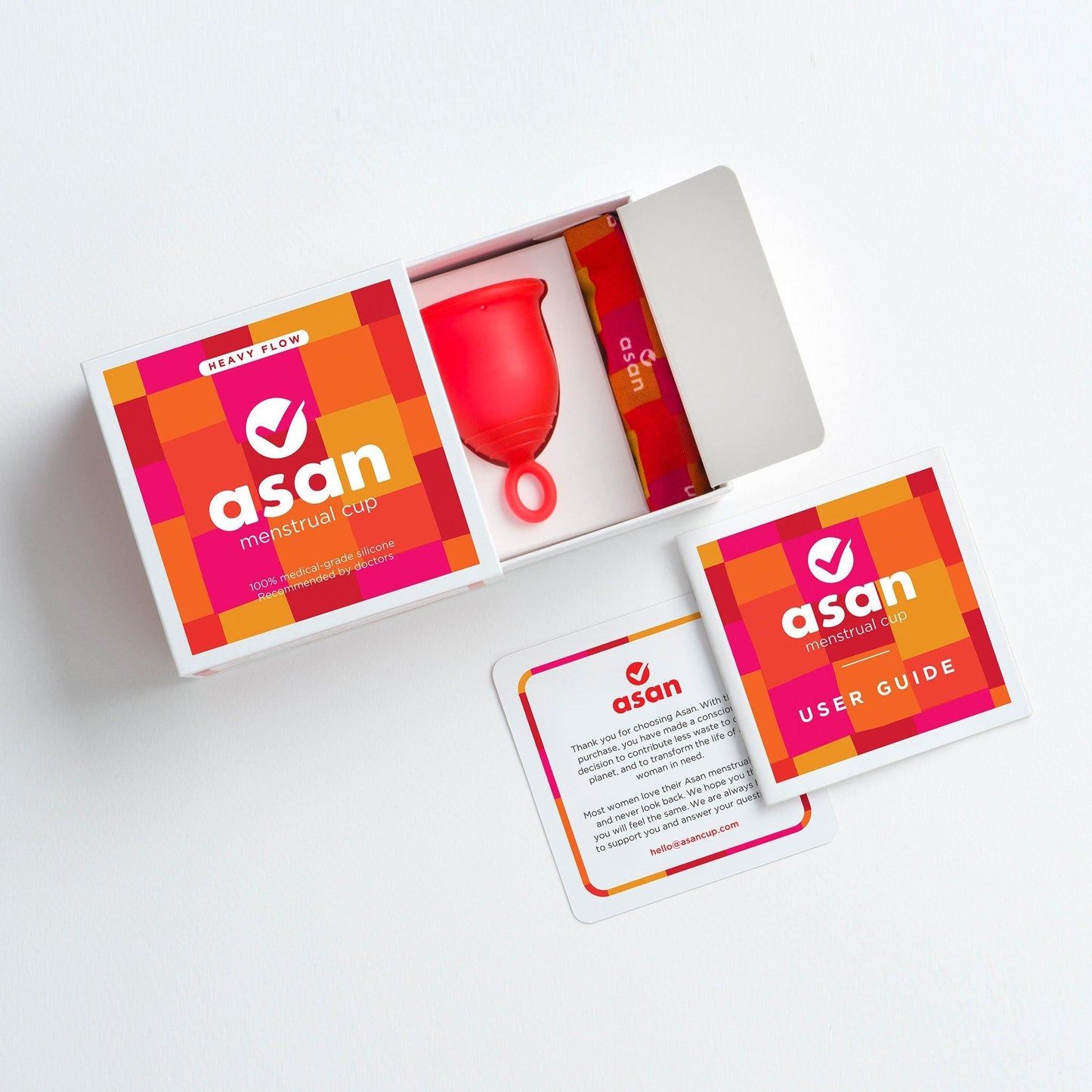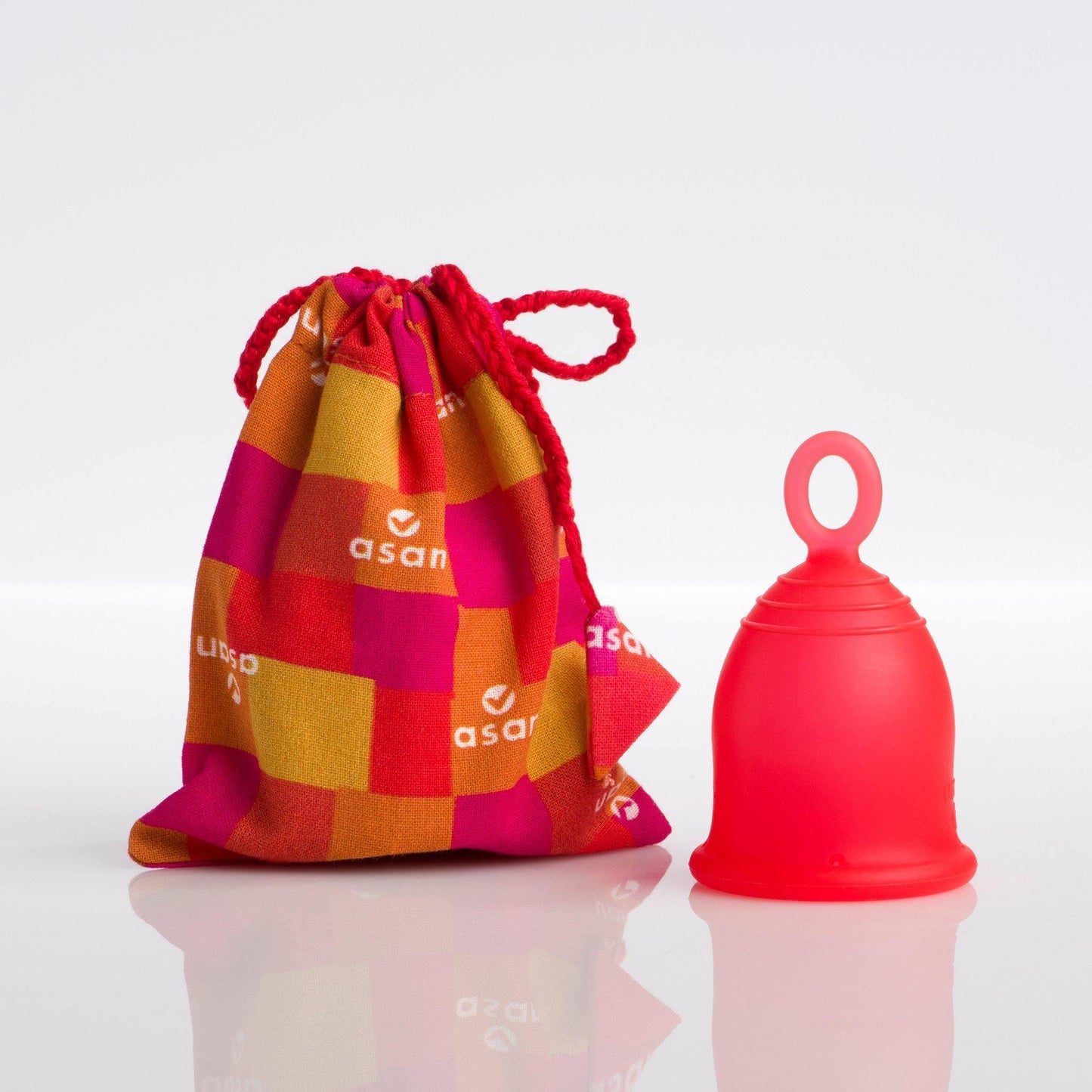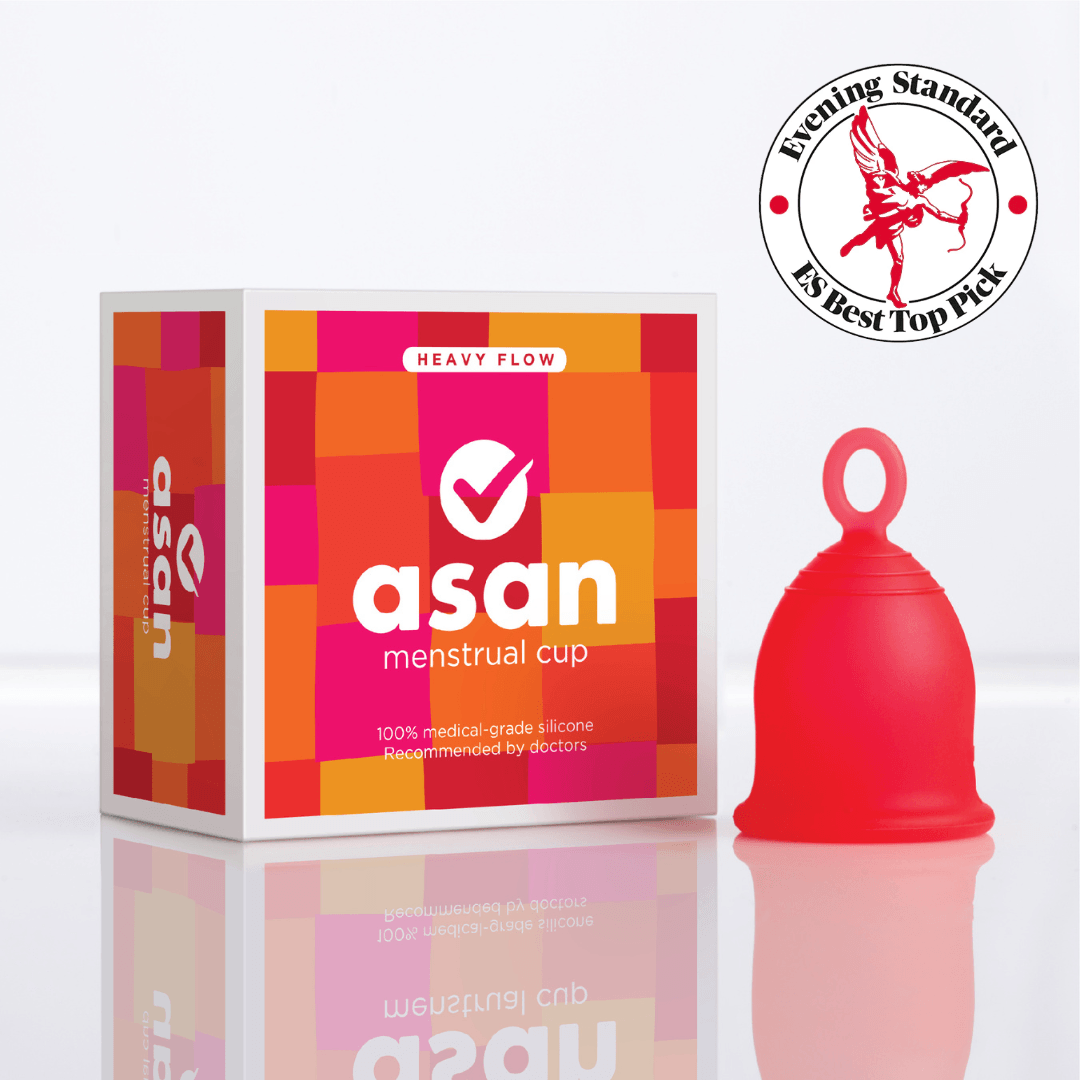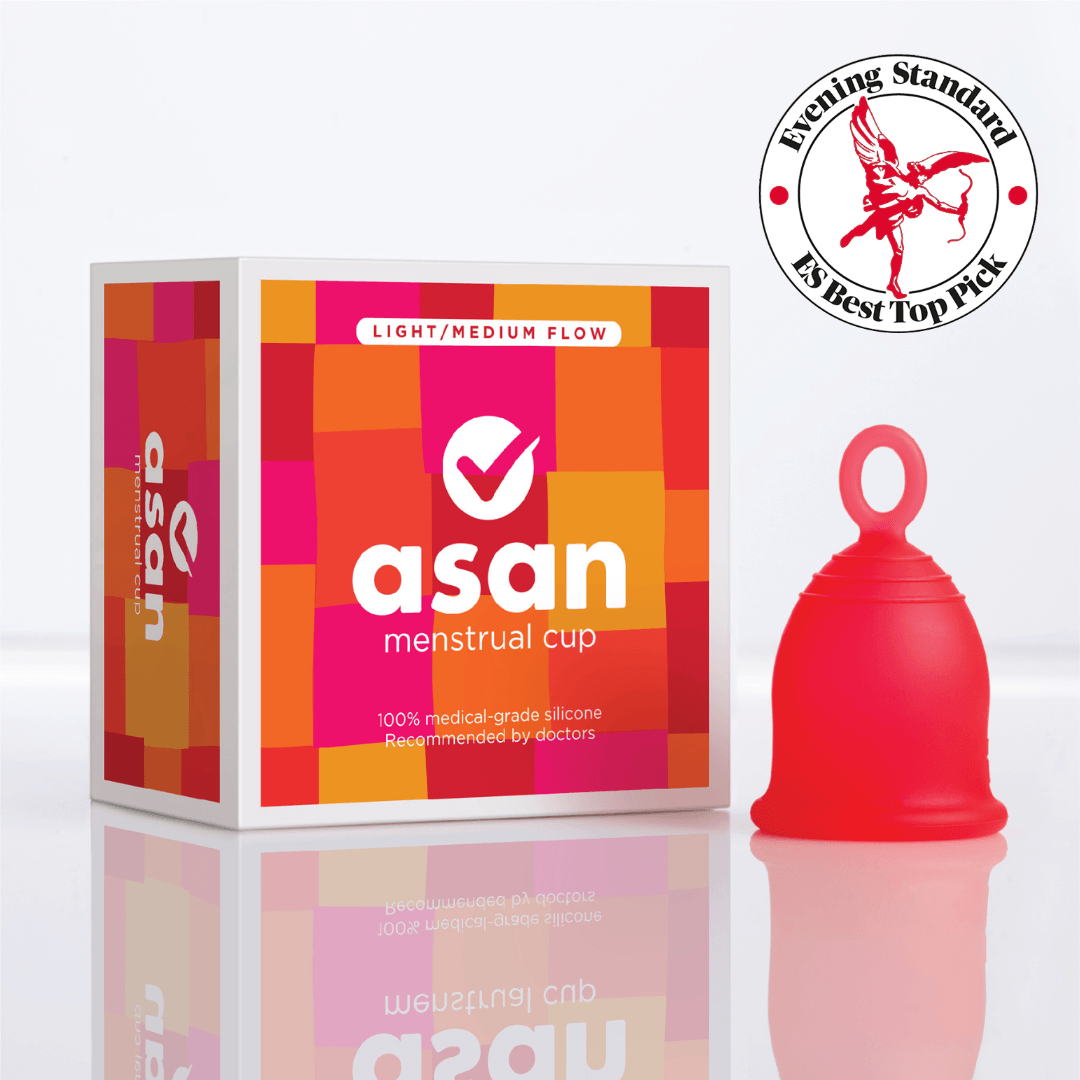Frequently asked questions
About menstrual cups
What is a menstrual cup?
A menstrual cup is an insertable period product that collects rather than absorbs your period flow. As a single cup can be safely re-used for years, it is a highly affordable and eco-friendly alternative to tampons and pads. Menstrual cup users experience a range of life-changing benefits, such as:
- Leak-free protection for up to 12 hours
- Sleeping comfortably through the night
- Working, exercising, swimming and being active throughout the day `
- No rashes, discomfort or itching
- No unpleasant odours
- No need to purchase or dispose of sanitary pads/tampons
- Reuse a single cup for up to 10 years
Are menstrual cups safe?
Menstrual cups are safe and hygienic. Following a detailed review, the medical journal The Lancet concluded that “menstrual cups are a safe option for menstruation management and are being used internationally”. As with any period product, it is important to select a trusted brand with high quality standards.
What is different about the Asan menstrual cup?
The Asan cup’s original design was developed at the Harvard Innovation Lab, USA. It is made from the highest quality medical grade silicone and has undergone rigorous customer testing. The cup features a removal ring that makes it extremely easy to remove. Our innovative design is protected by registered design rights in the UK, EU and India.
Asan was founded on the belief that no one — wherever they are in the world — should ever have to worry about access to safe and high-quality period care. For every cup that you purchase, we donate one for free to a woman or girl who cannot afford period safe products. By choosing Asan, you’re helping to create a fairer and more sustainable world.
Sizing
How many sizes does Asan offer?
The Asan cup comes in two sizes: light/medium flow and heavy flow. Your size depends on how often you tend to change tampons or pads on the heaviest days of your period.
- Light/Medium flow cup: For those who change pads/tampons every 6+ hours.
- Heavy flow cup: For those who change pads/tampons every 2-6 hours.
Please have a look at our detailed sizing guide which provides more information on this topic.
What if my flow varies throughout my period?
It is normal for menstrual flow to vary throughout your period. We advise choosing your size based on what you would require for the heaviest day of your period. For example, if you have heavy flow for the first two days followed by light flow, we advise selecting the heavy flow cup. This cup can be used on all days of your period. You can also purchase both sizes and use them on different days.
Does age or giving birth impact which size I should choose?
Giving birth does not impact which size you should use. The vagina is a highly elastic passage which can expand to let things in (or out!), but can also snap back into shape. We know of younger people who comfortably use our heavy flow cup, as well as mothers who have had multiple vaginal births who use our light/medium flow size.
What is the best size for teenagers?
For teenagers who are just starting out with menstrual cups, we suggest beginning with our light/medium flow cup. This is because it has a slightly smaller diameter and therefore has a smaller insertion point. Once you are comfortable with insertion and removal, you can switch to the heavy flow up (if needed).
Please see this blog on everything you need to know as a teen using a menstrual cup.
Care and cleaning
How do I keep my cup clean?
Before each menstrual period (including when you first receive the cup), sanitise it by boiling in a pot of water for 10 minutes. During your period, rinse your cup thoroughly with clean water each time you empty it. Always make sure that the air-holes are clean.
See this detailed step-by-step guide about cleaning your menstrual cup.
Is it essential to boil the cup?
We recommend boiling your cup before the start of each menstrual cycle to ensure that it is sanitised. If you can’t take it into the kitchen, then let it soak for 10 minutes in a mug or bowl of just boiled water that is covered with a lid.
How do I clean the airholes?
An easy trick to clean the air holes is to fill the cup to the top with water, and then gently squeeze it against your palm, squirting water out water through the air holes.
Can I use soap to wash my cup?
Washing your cup thoroughly with clean water and boiling between periods is sufficient to keep your cup clean. If you wish to use soap, please use a natural soap that is chemical and scent-free. Soaps with chemicals can damage the cup’s silicone and irritate your vaginal tissue.
How do I clean the cup in public bathrooms?
One of the advantages of our cup is that it can be worn continuously for up to 12 hours, which makes it less likely that you will have to remove it in public restrooms compared with tampons and pads. That said, on heavy-flow days, it may be necessary to empty it out more often than every 12 hours. If you are using a public restroom that does not have access to running water, we advise carrying a bottle of clean water to rinse the cup out. Another option if you use public restrooms often is to purchase a spare cup and use this as a back-up option for those times when it is difficult to wash your cup.
How often should I replace my cup?
Replace your cup if there are any signs of tear or damage. Slight discolouration following long-term use is normal.
Can I trim the removal ring or chop it off?
Our removal ring is made from ultra-soft silicone and is designed to be soft and flexible, so that you do not feel it. We don’t recommend trimming the ring, as it could cause your cup to have a jagged or sharp edge.
Please read this detailed blog on how to chop your ring off your Asan cup if you are considering chopping it off.
How do I store the cup when I’m not using it?
Store the cup in the cloth pouch provided, and place in a clean, dry and airy place. Make sure you clean and dry it thoroughly before storing.
Insertion and daily use
The cup looks big! How will it fit inside me?
We understand that inserting the Asan cup for the very first time can seem like a daunting task. However, please don’t be afraid — because the cup is made from soft, flexible silicone, it can be folded into a small shape and inserted with ease.
How do I insert the cup?
The very first time you insert your cup, we advise making sure you have plenty of time so you are not in a hurry. With practice, it will become extremely easy. There are five steps to inserting your cup:
Step 1: WASH. Wash your hands and the cup. If the cup is wet, it will be easier to insert.
Step 2: FOLD. There are several ways to fold your cup: the C-Fold (folding in half), the Punch Down Fold and the 7-fold.
Step 3. SQUAT. Squatting is an easy position in which to insert the cup into your vagina. Alternatively, you can sit wide-legged on the toilet, or lift one leg onto a stool.
Step 4: INSERT. Gently guide your cup into your vaginal opening, angling it towards your tailbone (not upwards). Keep it folded until it is entirely inside your vagina. Release once it is inside and it will pop open on its own.
Step 5: CHECK POSITION. If your cup is placed correctly, it will open up fully and will create a seal against the wall of your vagina. It should not be folded. Gently run a finger around the cup to check if it has opened correctly. If you prod it, it should be resistant and stay in place. You can also gently tug on the ring to help open up the cup.
What is the best/easiest way to fold the cup?
This depends on your own body and preferences. While many users favour the C-Fold for its simplicity, the Punch-Down Fold and 7-Fold are popular with first time users as they make the insertion point of the cup smaller. Please refer our guide to folding your menstrual cup which takes you through each of the folds in detail.
I’ve been through these steps but I am still having trouble with insertion.
Make sure you have plenty of time so you are not in a hurry. Some good tips include: lubricate your cup with water; angle it towards your tailbone (not upwards); and make sure it stays folded until it is inside your vagina. Once inside, prod the cup to make sure it has opened up and is no longer folded. If you are still struggling, please do contact us with any questions — no matter how intimate or embarrassing. Everyone’s anatomy is unique and we will make sure to get you the specific advice that you need.
Where exactly should a menstrual cup sit?
Unlike tampons, which are pushed all the way up to your cervix, a menstrual cup is worn low in the vaginal canal. The cup should be fully inside your body, although it is fine if a bit of the ring sticks out. Once inserted, the cup usually finds a comfortable position on its own — we advise allowing it to settle into position without poking or pushing it around too much.
Can I start using the cup before I am on my period?
Yes, you can insert the cup ahead of getting your period if you are expecting it. This also minimises the stress of having to rush to find tampons or pads once you experience a stain.
Can I use a lubricant to insert my cup?
Our removal ring is made from ultra-soft silicone and is designed to be soft and flexible, so that you do not feel it. We don’t recommend trimming the ring, as it could cause your cup to have a jagged or sharp edge.
Please read this detailed blog on how to chop your ring off your Asan cup if you are considering chopping it off.
Can I use the cup for swimming and exercise?
Yes, absolutely! Our users uniformly report that the Asan menstrual cup is the best possible form of period protection for swimming, exercise and generally being active.
Can I sleep wearing the cup?
Yes, one of the many benefits of the cup is that you can have an undisturbed night’s sleep while wearing it. Always make sure you remove and wash it within 12 hours.
Can I use the cup on its own or do I need back-up protection?
The first few times you try the cup, we recommend using a panty-liner or pad. Once you are confident, all you need is the cup. Goodbye disposable products!
Help! The cup is leaking.
The most common reason for leaks is that your cup is not inserted properly. It may not have “popped” open and sealed against the walls of your vagina. If your cup has opened correctly, then it may be the case that the cup is full and is overflowing, or that you need a different size cup. Please have a look at our detailed guide to preventing leaks which should help you solve the problem.
I can feel the cup inside me and/or it is uncomfortable.
It can take two or three cycles to get used to wearing the cup, so please give it time. If it feels uncomfortable or presses against your bladder, then we suggest opting for the light/medium flow cup, which is made from slightly softer silicone than our heavy flow cup. If you face any serious pain or discomfort, please stop using the cup immediately and contact a doctor.
The ring is sticking out and/or poking me.
Our removal ring is designed to be soft and flexible so that it does not poke you. If it is sticking outside your body, we suggest gently pushing the cup upwards until you cannot feel it.
Removal
How should I remove the Asan menstrual cup?
Thanks to its unique removal ring, the Asan cup is extremely easy to remove. There are four simple steps to removing your menstrual cup:
Step 1: WASH HANDS. Thoroughly wash hands with soap and water.
Step 2: LOCATE CUP. Guide two fingers into your vagina until you can reach the removal ring. Gently pull on the ring until the base of the menstrual cup is near the entrance of your vagina.
Step 3: PINCH. Do not pull the cup out completely using the removal ring. Instead, pinch the base of the cup, which will break the suction. Then slowly guide the cup out of your vagina.
Step 4: EMPTY & REINSERT. Empty the menstrual fluid into the toilet or bath. Wash your cup with clean water and reinsert.
How often should I empty out the cup?
You can wear your cup continuously for up to 12 hours. If you tend to have heavy periods, then check the cup every 4-6 hours to see if it is full. Change your cup at least twice a day, and do not leave it in for more than 12 hours at a time.
Can the cup get stuck or lost inside me?
Please don’t worry – it is simply not possible for your menstrual cup to get lost inside your vagina! If you are struggling, relax by taking some deep breaths. It is important to be calm. Reach inside your vagina and pull on the ring to move your cup downwards. Once you can reach the cup, pinch the base to break the suction and remove. Do not remove the cup without first breaking the seal.
Do I have to remove the cup every time I go to the toilet?
You do not need to remove the cup to use the toilet. After a bowel movement, wash your hands and gently prod the cup to make sure it is still in place.
Is removing the cup messy? Will I get blood all over me?
No, blood should not spill out when you remove the cup. It comes out upright and you can empty the contents into the shower or toilet. When you are first getting used to the cup, it is important to be calm and remove it slowly. After a few tries, you’ll be doing in seconds.
Your health
Do menstrual cups cause Toxic Shock Syndrome (TSS)?
Toxic Shock Syndrome (TSS) is a rare but serious bacterial infection that can sometimes be fatal. TSS has been associated with leaving tampons inside the body for too long. The incidence of menstrual-related TSS is extremely low (fewer than 0.5 cases per 100,000)* and those who are treated promptly are likely to make a full recovery.
Symptoms of TSS can include sudden high fever, diarrhoea, vomiting, sore throat, muscle aches, rashes, dizziness, breathing difficulties, drowsiness and fainting. If you experience any of these symptoms, remove your cup immediately and seek medical attention. Do not use the cup if you have a history of TSS. Always follow this user guide for how to clean and use the cup.
Want to learn more about TSS? Read this detailed blog on TSS and menstrual cups.
*The Lancet Infectious Diseases, May 2019
Can I use the cup with an Intrauterine Device (IUD?)
Most people with an IUD can use the Asan cup. This is because an IUD sits at the top of the vaginal canal, while your menstrual cup sits towards the bottom. However, as everyone’s body is different, please consult the doctor who fitted your IUD before using a menstrual cup.
For more detail, read this blog on using a menstrual cup with an IUD.
Can I use the cup if I have a yeast or other infection?
We do not advise using your cup while you have a vaginal infection. Please wait for your infection to clear up. However, it is worth noting that because sanitary pads are associated with rashes and itching, the Asan cup is a much better long-term option to avoid vaginal infections.
Do menstrual cups cause prolapse?
There is no established scientific causation between prolapse and the use of menstrual cups. Prolapse is a condition where the uterus, or other internal organs such as the bladder, drop down into the vagina. It is most commonly found in women who have delivered several babies vaginally. Symptoms include a feeling of pressure in the pelvic region and urinary incontinence. If you already suffer from prolapse, we advise that you seek medical guidance before using our menstrual cup. For all other users, please make sure that you always break the seal before removing your cup to avoid any type of pain or discomfort.
Can I use the cup if I have vaginismus?
Vaginismus is when the muscles of your vagina involuntarily tighten when you try to insert something, such as a tampon, a menstrual cup or during sex. It can be painful and stressful to go through. The great news is that vaginismus can be overcome with the right therapies, such as counselling and specialist exercises. If you experience vaginismus, we recommend seeing a gynaecologist for treatment.
We know of many Asan cup users who have had successful treatment for vaginismus and now happily use a menstrual cup. We advise using our light/medium flow cup, as it is slightly smaller and less firm, which makes it easier to insert.
Read this detailed blog to learn more about vaginismus.
Can I use the cup if I have never had sex?
Menstrual cups are suitable for anyone with a period, whether or not you have had sex.
For more detail, read our blog on whether a virgin can use a menstrual cup.
If you have specific concerns about using an insertable product, please consult your doctor.
Can I wear the cup while having sex?
We don’t advise having penetrative sex while using the cup; please remove it before any type of penetration. That said, unlike with tampons and pads, our menstrual cup is worn wholly inside your body — so you can still enjoy all types of non-penetrative stimulation during your period.
Can I share my menstrual cup?
We don’t advise sharing your cup as it is for personal use.
Can I use the cup for postpartum bleeding?
Postpartum bleeding refers to the heavy bleeding that is experienced after giving birth. Due to the higher risk of infection during this period, we don’t advise using the cup for the first two months after delivery. Please speak with a doctor if you have further questions relating to post-pregnancy bleeding.
Will the cup smell? Will I smell while using it?
One of the advantages of a menstrual cup is that your period flow is collected inside your body, which means that it doesn’t oxidise and start to smell (which is what happens with sanitary pads). As long as you empty your cup every 12 hours, wash it thoroughly and boil it between periods, you should experience no odours at all.
Will the cup make my period shorter compared to tampons or pads?
While there are no scientific studies on this topic, some users do report that using the Asan cup has made their period both shorter in length and lighter in flow. This might be because the cup collects your flow rather than waiting for it to be absorbed by a tampon or pad.
Ready to make the switch? Shop now.
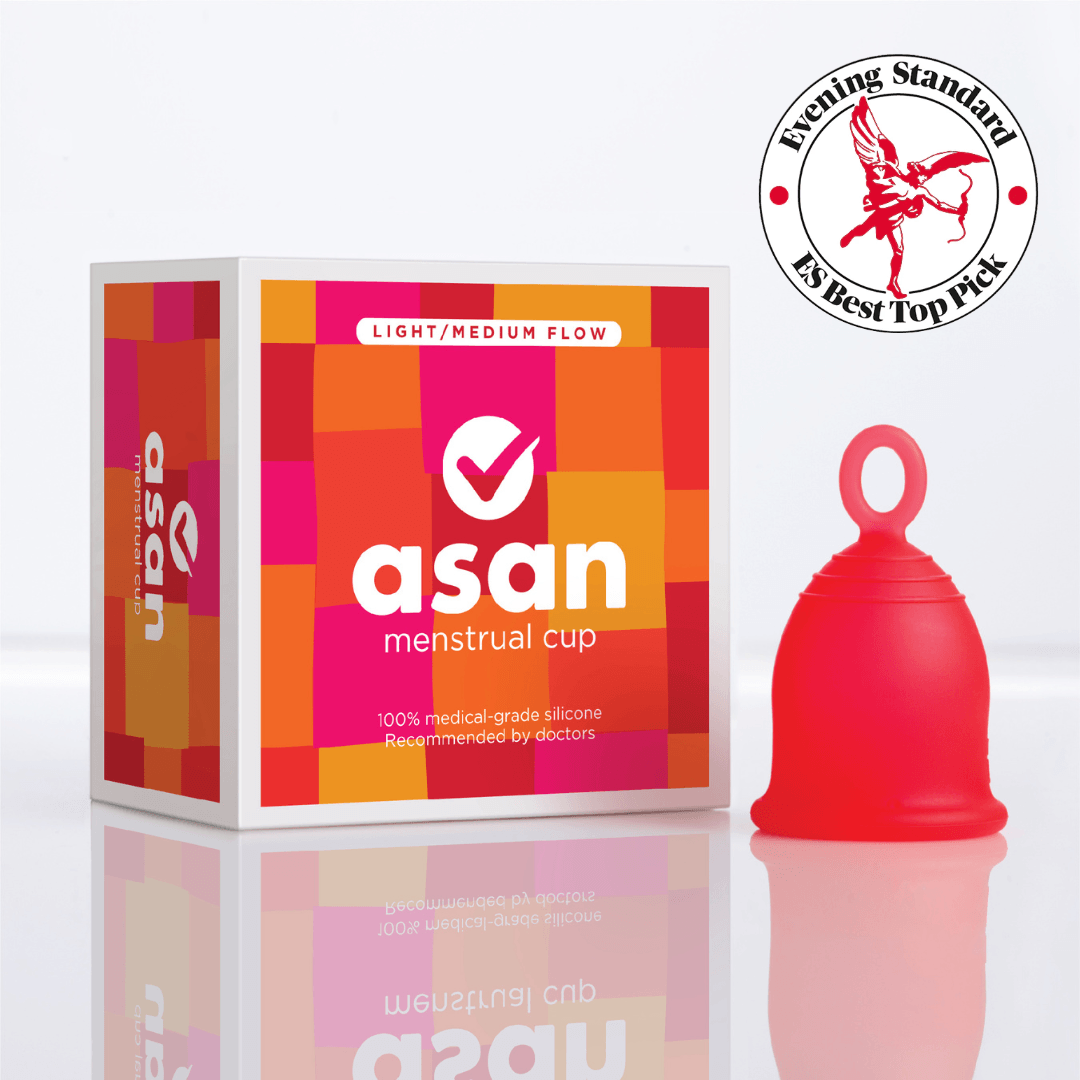

Asan Menstrual Cup



